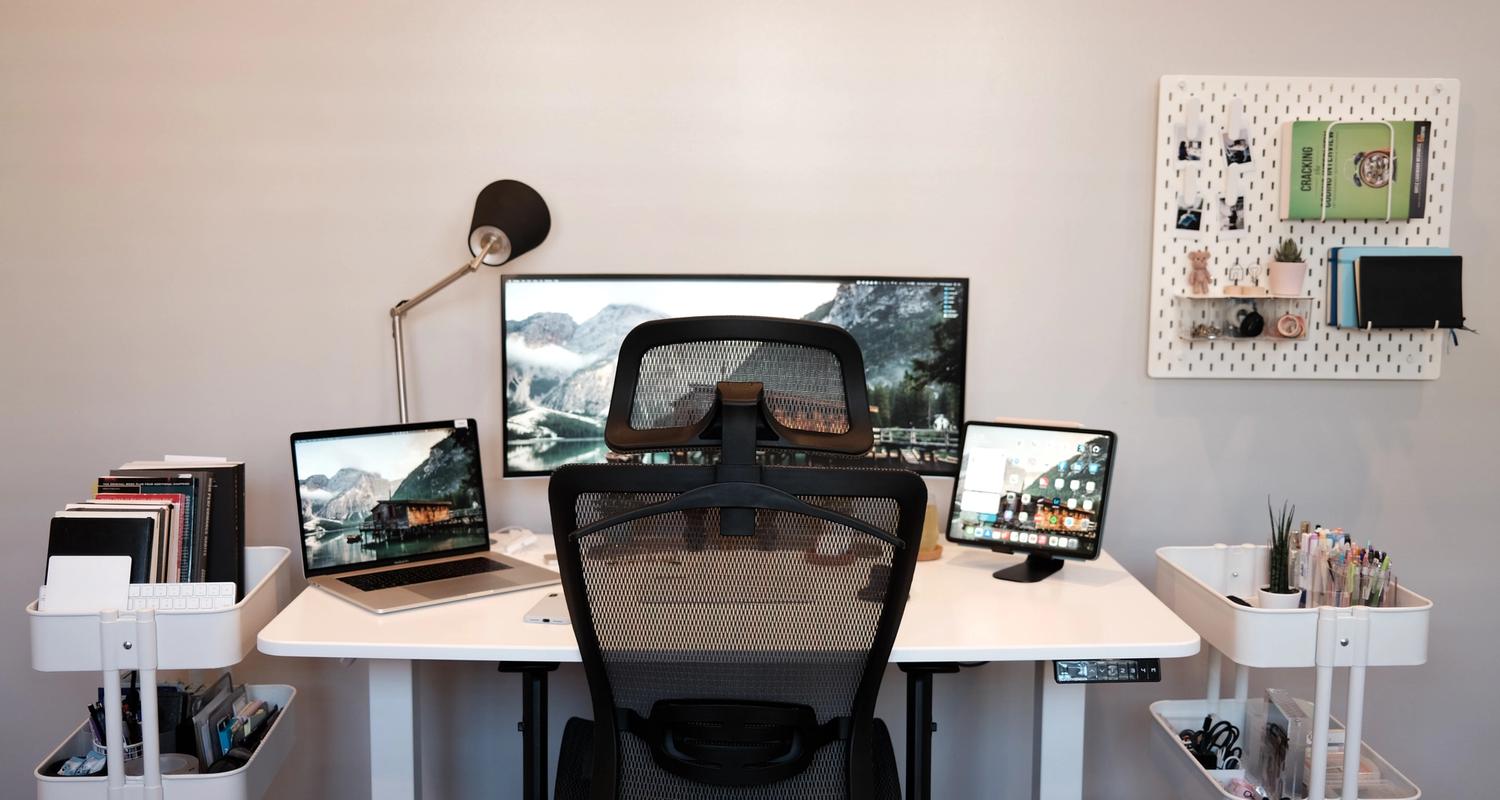Any time my back starts bothering me, and my usual stretches don’t work, I call my brother. He’s a progressive chiropractor in San Jose, so he sees a lot of people working in tech. His latest horror story was about a 30-year-old patient with a particularly demanding employer. “They’re spending 15 or 16 hours at their desk a day, so it’s very hard on their bodies,” he says. She was worried her mid-back pain and bad posture might leave her with a permanently curved spine.
The COVID work-from home era proved that lots of people could be perfectly productive working at home in their pajamas, even over long periods. But removing that separation between home and office also led to more people working 8+ hours daily, and regularly letting work bleed over into the weekend. And how many of us are guilty of working at kitchen tables, sitting in bed or hunched over a coffee table?
After nearly two years of skipping remote work best practices, chiropractors are seeing what The New York Times called an epidemic of work-from-home injuries. Even if you personally feel that pain is weakness leaving the body, bringing that ethos to your company culture will probably end up costing you money. A 2018 study found that low back pain was the leading cause of disability worldwide. Johns Hopkins health economists found that pain costs US employers $299 to $334 billion in lost productivity per year. It also translates into lost wages for the person with the back problem. In his talk The Operating System of You, Shawn Wang, known in the industry as Swyx, breaks down how a bad back is bad for your wallet.
And when your neck, hands and back are hurting, it’s easier to wind up bickering with coworkers, missing out on family fun, and generally hating your life.
While it’s impossible to escape your keyboard and monitor, you and your team can avoid many common and painful injuries like tech neck, computer back and mouse shoulders with some simple changes. All it takes are some simple changes with the way you approach your workday, and your surroundings.
Change up your keyboard
Remember those weird split-in-two keyboards that first started showing up in the mid 90s? Well, ergonomic keyboards are still around and even more bizarre looking. But what they may lack in looks they make up for in function. It turns out the digital keyboard was copied from the old school typewriter, without stopping to think what would make your hands more comfortable.
This generation of ergonomic keyboards, like the Kinesis Advantage, 2 just feel better to use, even if typing hasn’t made your wrists and hands ache. That’s what Martin Fowler, a writer and pundit focused on software development, discovered after three years of typing on the Kinesis.
There are plenty of ergonomic keyboards around, Fowler especially liked this one because of the way it moved around various functions to optimize the way our hands work. Instead of limiting the thumbs to just pushing the space bar, the Kinesis has a couple clusters of function keys (space, return, delete) so the thumbs have more to do.
Level Up Your Workspace
And once you have a new keyboard, it just may inspire you to upgrade to an ergonomic workspace by tweaking your chair, monitor and lighting. The Wirecutter created an ultimate guide to an ergonomic work station, and here are a few high points.
Make sure to position your laptop or tablet so the monitor is at the proper height. If you do most of your typing on a laptop or tablet, there’s a very good chance you’re looking down too much, which puts a strain on your neck. Choose a sturdy laptop stand to elevate it so the top of the screen is two to three inches above your eyes.
A supportive and comfortable chair is foundational to good posture, and it’s worth spending some money to get a well made one. Look for models with armrests, and adjustable seat height, tilt and depth, such as the classic Aeron Chair by Herman Miller or a [Steelcase Gesture](Eames Aeron Chair by Herman Miller or a Steelcase Gesture, the first). The latter was designed after a study of how using technology changes human posture. If you’re feeling guilty about the price, just divide the price by the number of days you’ll use it over the next three years, and you’ll realize you’re worth it.
The last key feature every workspace needs is good light. Staring at a bright computer screen in a dark room puts a strain on your eyes, and makes you lean forward and squint. If your workspace isn’t a light-filled loft, fake it by layering an overhead light that casts glow over the entire space with a task light on your desktop. And with winter coming, it might be wise to try out a seasonal affective disorder (SAD) light therapy lamp that delivers 10,000 lux of brightness. Dave Asprey writes that in addition to staving off winter blues, SAD lights can improve focus, increase energy, and restore natural sleep rhythms.
Move it
It’s true that regularly spending an hour at the gym will keep your muscles toned, improve your cardiovascular health and lift your mood. But it turns out you can get a boost from less exercise. A lot less.
Researchers led by a team from the University of Colorado Anschutz Medical Campus and the Johnson & Johnson Human Performance Institute were interested in finding ways that mostly sedentary office workers could enjoy better wellbeing. They had 30 test subjects cycle through these three modes: sitting continuously for six hours, getting up every hour to walk on a treadmill for five minutes, and walking on a treadmill for 30 minutes every morning before work. Both walking groups reported feeling more vigorous and energetic, compared to people who sat all day. But at the end of the day, people who walked every hour felt lower stress, less fatigue and had fewer food cravings.
Be Happy
Get ready to have your mind blown. You may think that having a back that feels good will make you happy. But research shows that it’s the other way around: being happy makes your back feel good. The brain is powerful and can help shape our physical reality. Yes, it sounds woo-woo, but there’s clinical evidence to back it up.
Researchers at the University of Texas at Austin found that subjects had better pain tolerance after watching a funny movie than a dry documentary. And another study found that people with chronic back pain who were in a happy mood had lower levels of pain and more tolerance compared to those who were depressed. What makes you happy? Make time on your calendar for it every day.
Take a break
Mathilde Collin, the CEO of Front, isn’t the kind of person to waste time, In fact, the busy founder regularly charts out how she spends every hour and shares her time graph on Twitter. But she meditates for 10 minutes every morning, and holds a weekly guided team meditation. And Thursday afternoons are blocked out for what she calls"stepping back time." Collin swaps her laptop for a notebook and spends time focused on one issue. Both practices are part of the discipline that she says is key to successfully growing a startup.
And you’ll be surprised how just a little time away from your desk recharges you, especially if you walk in nature. Studies in the science called biophilia found that leaving the office to reconnect with nature, even for a few minutes, helps us return to our work with renewed attention and creativity.


